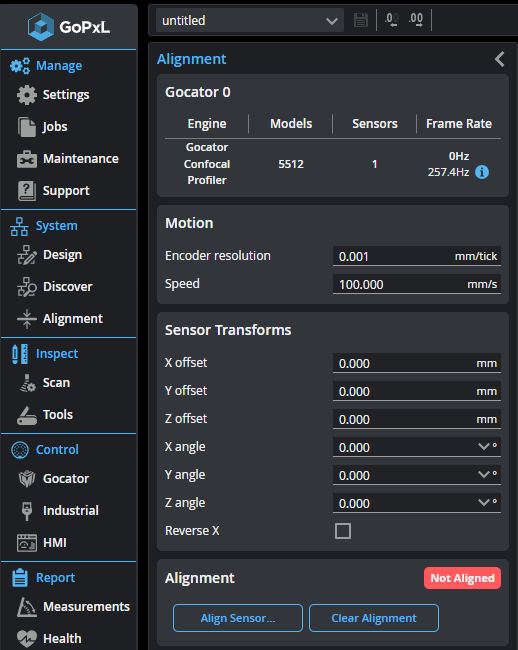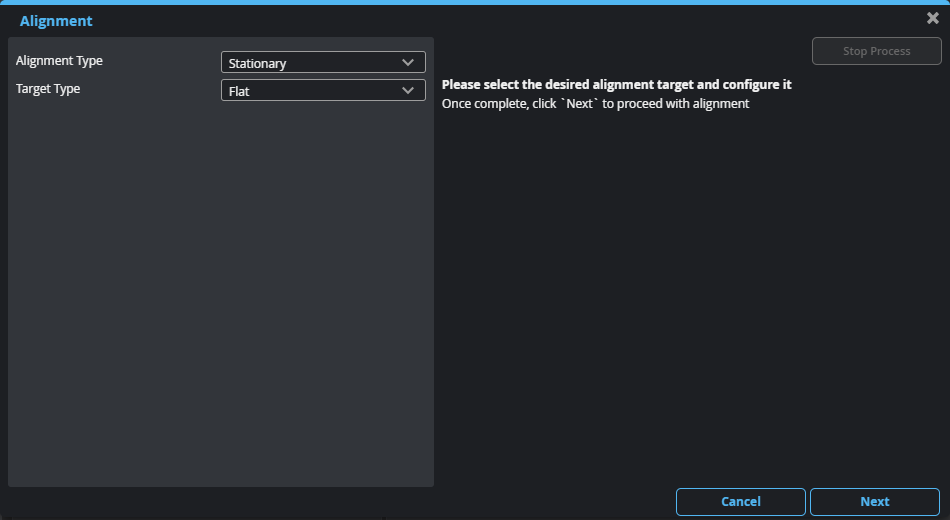Aligning Sensors

|
Alignment is rarely used on confocal sensors. |
Alignment is the process you use to automatically calculate transformations (rotations and translations / offsets) that are applied to a sensor's scan data while it is scanning targets. If you do not correct for these rotations, scan data may be too distorted for your application, and your measurements may therefore be inaccurate. Alignment is often required for various reasons:
- To compensate for sensor mounting inaccuracies relative to the intended scanning surface.
- To set a Z (height) reference plane, using a sample target.
In single-sensor G4 or G5 applications, you don't typically need to align the sensor. For dual-sensor applications, however, you need to perform an alignment. You should use the alignment procedure on the System > Alignment page, by clicking the Align Sensors button. The routine provides step-by-step instructions.

Once you click the Align Sensors button, an alignment "wizard" goes through the steps required.


|
Sensors are pre-calibrated and ready to deliver data in engineering units (mm) out of the box. Alignment procedures do not affect sensor calibration. |